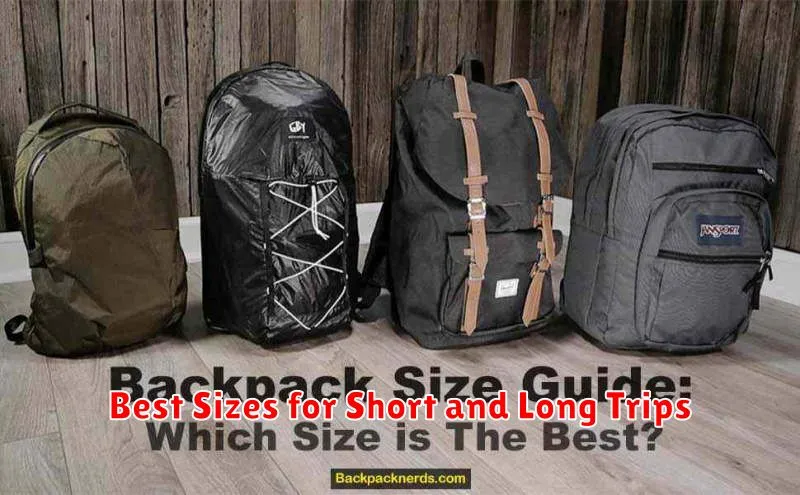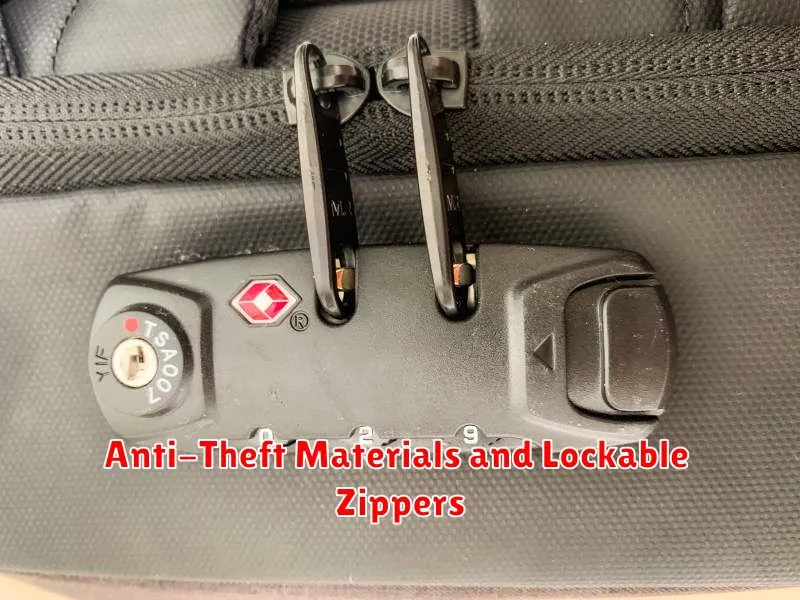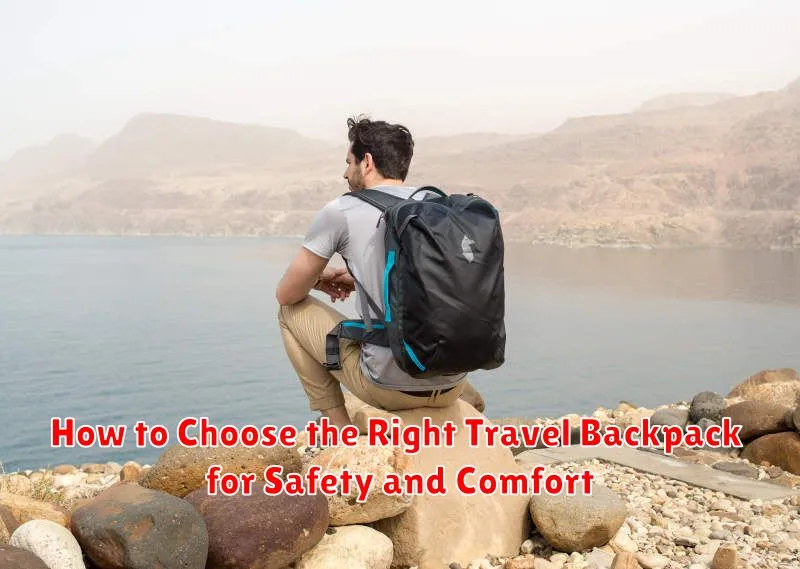Choosing the right travel backpack is paramount for a safe and comfortable journey. Whether you’re embarking on a weekend getaway or a months-long backpacking adventure, your backpack is your constant companion. It holds your essentials, protects your valuables, and impacts your overall travel experience. Selecting a backpack that prioritizes both safety and comfort is a crucial first step in planning any trip. This article will guide you through the essential factors to consider when choosing the perfect travel backpack, ensuring a smooth and enjoyable travel experience.
From anti-theft features to ergonomic design, understanding the key elements of a safe and comfortable travel backpack can make all the difference. We’ll explore the importance of factors like size, weight, material, compartmentalization, and security features, equipping you with the knowledge to make an informed decision. Learn how to choose the best travel backpack that fits your individual needs and travel style, allowing you to focus on exploring the world with peace of mind and physical ease.
What to Look for in a Travel Backpack
Selecting the right travel backpack involves considering several key features. Size and capacity are paramount, measured in liters. Consider your trip length and packing style. A weekend trip might require a 30-40 liter pack, while longer journeys may necessitate 50-70 liters or more.
Comfort is crucial, especially for extended travel. Look for adjustable and padded shoulder straps, a hip belt, and a chest strap to distribute weight effectively. Back panel ventilation is also important for hot climates.
The material of the backpack impacts its durability and weather resistance. Ripstop nylon or polyester are common choices, offering a balance of strength and lightness. Consider a backpack with a waterproof cover or water-resistant coating for added protection.
Organization features contribute to ease of access and packing efficiency. Look for multiple compartments, internal pockets, and external attachment points for gear. Lockable zippers can enhance security.
Top Safety Features to Consider
When choosing a travel backpack with safety in mind, several key features can significantly reduce the risk of theft and improve your peace of mind. Lockable zippers are a fundamental starting point, deterring opportunistic thieves from quickly accessing your belongings. Consider backpacks with interlocking zippers that can be secured with a small padlock.
Slash-proof material is another crucial element. These backpacks are constructed with reinforced fabrics or wire mesh embedded within the material, making it extremely difficult for thieves to cut open the bag and steal your valuables. Look for materials like high-denier nylon or polyester with added slash protection.
Hidden pockets provide an additional layer of security for storing important documents, cash, and small electronics. These pockets are often discreetly placed within the lining, against the back panel, or within shoulder straps, making them difficult for pickpockets to locate.
RFID-blocking compartments offer protection against electronic theft. These compartments are lined with a special material that blocks radio waves, preventing thieves from scanning your credit cards or passport information wirelessly. While the effectiveness of RFID blocking is debated, it provides an extra layer of precaution.
Consider a backpack with reflective strips or panels, particularly if you’ll be traveling at night or in low-light conditions. These reflective elements increase your visibility to drivers and cyclists, enhancing your safety on the road.
Best Sizes for Short and Long Trips

Choosing the right backpack size is crucial for both safety and comfort. For short trips (1-3 days), a backpack with a capacity of 20-40 liters is generally sufficient. This size comfortably accommodates essential items like clothing, toiletries, and a small electronic device. It allows for easy maneuverability, especially in crowded areas, and minimizes strain on your back and shoulders.
Weekend trips or those lasting 3-5 days typically require a backpack in the 40-50 liter range. This allows for additional clothing, footwear, and perhaps some recreational gear. It offers a balance between packing space and portability.
For longer journeys exceeding 5 days, backpacks ranging from 50-70 liters (or larger for extended expeditions) become necessary. These larger packs accommodate bulkier items, including more substantial clothing options, camping gear, or specialized equipment. However, with increased capacity comes added weight, so careful packing and proper weight distribution become paramount for comfortable carrying.
Consider the specific activities planned for your trip. A hiking trip will likely necessitate a different backpack style and size than a city tour. Always prioritize a comfortable fit and ensure the backpack is not overloaded, which can lead to discomfort and potential injury.
Anti-Theft Materials and Lockable Zippers

When prioritizing safety, consider backpacks incorporating anti-theft materials. Slash-proof fabrics, such as those made with high-denier nylon or embedded wire mesh, can deter thieves from easily cutting into your bag. Look for reinforced stitching and double-layered panels in vulnerable areas like the bottom and sides.
Lockable zippers are another crucial security feature. These zippers often have interlocking teeth or loops that can be secured with a small padlock or TSA-approved lock. While not foolproof, lockable zippers provide a visible deterrent and make it more difficult for opportunistic thieves to quickly access your belongings. Consider the placement of the zippers as well. Zippers that are concealed against your back offer better protection than those readily accessible from the front or sides.
Comfort and Weight Distribution Tips
Comfort and proper weight distribution are crucial for enjoyable travel. A well-fitted backpack minimizes strain and potential injury. Key comfort features include a padded hip belt, adjustable shoulder straps, and a contoured back panel. The hip belt should transfer most of the weight to your hips, relieving pressure on your shoulders and back.
Effective weight distribution involves placing heavier items closer to your back and near your shoulders. This centers the load and improves balance. Pack lighter items towards the outside and bottom. Keep frequently used items easily accessible, like water bottles and snacks.
Adjust the shoulder straps and hip belt snugly but not too tight. A good fit allows for proper airflow and prevents chafing. Regularly readjust your backpack throughout your journey to maintain comfort and balance.
Backpack Brands Travelers Trust
Selecting a reputable backpack brand is crucial for ensuring durability and reliability during your travels. Osprey remains a popular choice, known for its comfortable suspension systems and lifetime warranty. Gregory is another trusted brand favored for its diverse range of backpacks designed for specific activities like backpacking and travel.
For budget-conscious travelers, Deuter offers excellent value with durable packs suitable for various travel styles. Nomatic has gained recognition for its travel-specific features, including organizational compartments and anti-theft designs. Tortuga backpacks are designed explicitly for carry-on travel, maximizing packing space while adhering to airline size restrictions.
While these brands are frequently recommended, researching individual models within each brand is essential. Consider your specific needs, trip duration, and packing style when making your final decision.
Maintaining and Cleaning Your Backpack
Regular maintenance is crucial for extending the lifespan of your travel backpack. After each trip, completely empty your backpack and remove any debris or crumbs. Inspect the seams, zippers, and buckles for any signs of wear and tear. Address minor issues promptly to prevent them from becoming major problems.
Cleaning your backpack should be done according to the manufacturer’s instructions. Generally, hand-washing is recommended. Use a mild soap and lukewarm water. Avoid harsh chemicals or abrasive cleaners, which can damage the fabric. Scrub gently with a soft brush or sponge, paying particular attention to stained areas. Rinse thoroughly and allow the backpack to air dry completely in a well-ventilated area, away from direct sunlight or heat.
For backpacks with water-resistant or waterproof coatings, periodic reapplication of a waterproofing treatment may be necessary to maintain its protective properties. Follow the product instructions carefully.
When not in use, store your backpack in a cool, dry place away from direct sunlight. Avoid storing it when damp or wet, as this can lead to mold and mildew growth.

